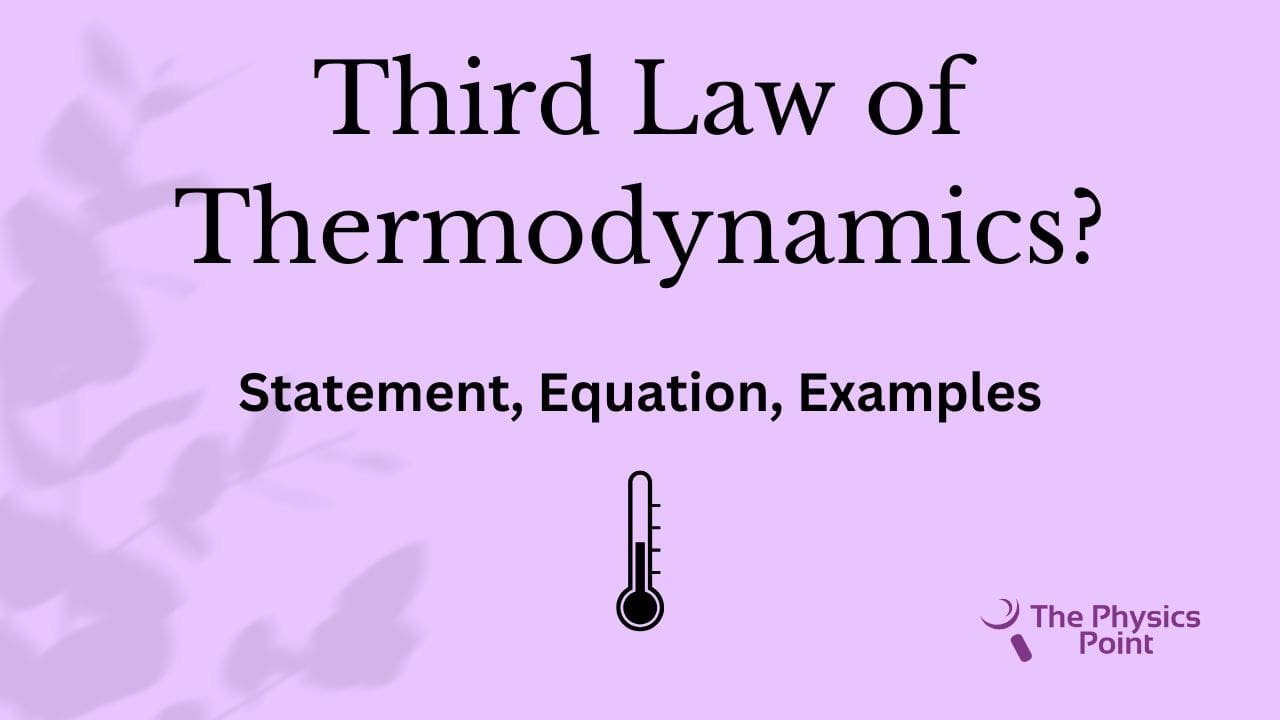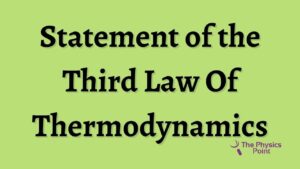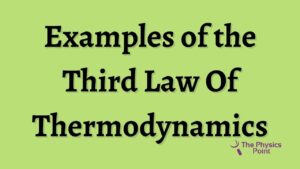Third Law of Thermodynamics? Statement, Equation, Examples

Hello guys you are again very warm welcome in the world of Physics. we are here to present to you the most important law of thermodynamics. Thermodynamics is a very good considered branch of Physics. in this branch of Physics, we study the heat, energy, and entropy of the system. You can read about Thermodynamics and details in our previous article posted on our website. Thermodynamics has three laws that are called the first second and third laws of thermodynamics. After reading the content your doubt related to thermodynamics third law will be resolved.
In today’s article, we will discuss Many important questions such as Third Law of Thermodynamics, thermodynamics third law, the third law of thermodynamics, 3rd law of thermodynamics, state the third law of thermodynamics, state third law of thermodynamics, what is the third law of thermodynamics, thermodynamics laws pdf, etc. So please read this whole article from start to end to make your understanding very clear in Physics. Because before it we posted about the first law and second of thermodynamics on our website already.
Statement of the third law of Thermodynamics
According to the third law of thermodynamics, it is stated that the entropy of a system at zero kelvin ( also called absolute zero) is equal to zero. We can say in other words that it is not possible for a process to make the entropy of any system zero in a definite number of operations. We represent the entropy by the symbol S. By entropy can measure the randomness or the disorder of any close system. The microstate of the system in which the energy of the system is very low or minimum is called the ground state of that system.
Some observations can be figured out in a closed system at zero kelvin temperature-
The first observation is dead the system which relies on zero kelvin does not contain any heat inside it. At this temperature, the molecules or the atoms possessed by the system are at their minimum energy level. We can say that the temperature in the system has only one microstate which is called the ground state. At the zero kelvin temperature, the entropy of this type of system is exactly zero.

Explain the impossible of a temperature of zero kelvin
The temperature scale in the SI system is Kelvin. it is impossible to attain an absolute zero temperature because it goes against the second law of thermodynamics, which tells that the overall entropy of any isolated system cannot decrease over time. Heat cannot make any transaction from the cold region to the hot reason without any work done. If we want to bring any substance at zero Kelvin, we have to remove all the energy that resides in the substance, which is impossible because that is always some energy present inside the molecules of the system.
Equation of thermodynamics third law
Here we are explaining to you the third law of thermodynamics equation. Mainly there is no equation for the third law of thermodynamics as the first law and second law have. but there are some mathematics operations which is related to the third law of thermodynamics equation.
Nernst heat theorem:
ΔS = lim T → 0 (ΔH/T)
Examples of the third law of thermodynamics
Here are some third law of thermodynamics examples. These are also considered applications of the third law of thermodynamics.
Perfect crystal
A perfect crystal is a crystal that contains all the atoms in an arranged manner without any matter defect. At the absolute zero temperature, this type of Crystal has a minimum entropy that is zero according to the third law of thermodynamics.
Protein folding
The third law of thermodynamics is to study the foldings and structure of proteins which is a very important and crucial process in the functions of the proteins. at zero kelvin temperature, the entropy or protein attains zero. The protein is very stable at this stage because it possesses the minimum amount of disorder.
Superconductivity
Superconducting means the ability of any material to flow electricity without making any resistance at a very low temperature. We use the 3rd law of thermodynamics to determine the behavior of these types of material at absolute zero temperature because at this temperature these materials behave like perfect conductors.

Frequently Asked Questions (FAQs)
Ques. What do you understand by thermodynamics?
Ans. thermodynamics is a great branch of Physics as well as chemistry. In this branch, we study heat work energy at the temperature of the system.
Ques. What is the first law of thermodynamics?
Ans. The first law of thermodynamics is very important and it stated about energy. As per the main law of thermodynamics, energy can’t be made nor created. energy can change its form into different forms.
Ques. What is the meaning of Entropy?
Ans. In any system entropy is the measurement of the disorder or the randomness present in the system. but entropy is applicable to the closed system. We can say that entropy is directly proportional to the number of microstates accessed by any system.
Ques. What is the third law of thermodynamics?
Ans. As indicated by the third law of thermodynamics, it is expressed that the entropy of any framework or system at zero kelvin temperature stays steady. We can say in other words that it is not possible for a process to make the entropy of any system zero in a definite number of operations.
Conclusion
The final word of this article is that today behave learn different types of important things about the Thermodynamics third law. We discussed Very important types of questions. These questions are like the law of thermodynamics pdf, state the law of thermodynamics, the third law of thermodynamics examples, the third law of thermodynamics statement, applications of the third law of thermodynamics, the third law of thermodynamics class 11 chemistry, explain third law of thermodynamics, the third law of thermodynamics defines, the third law of thermodynamics equation, etc.
